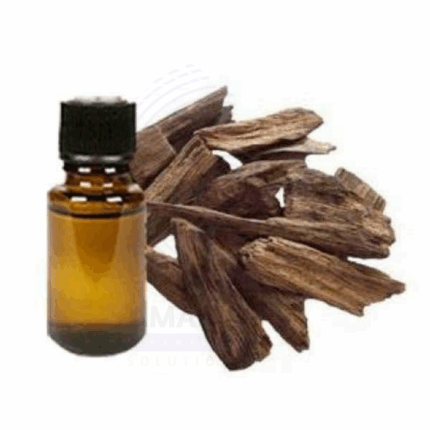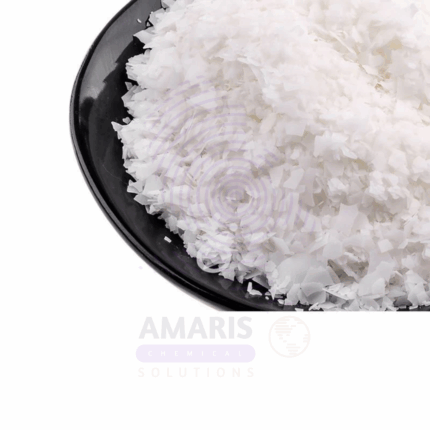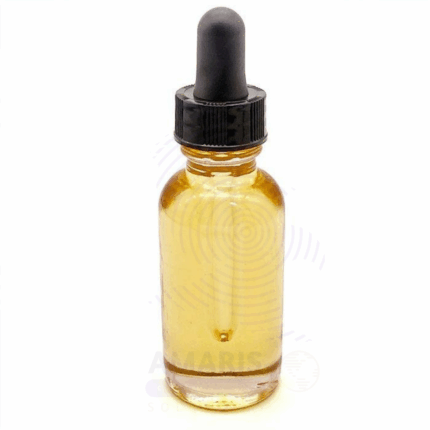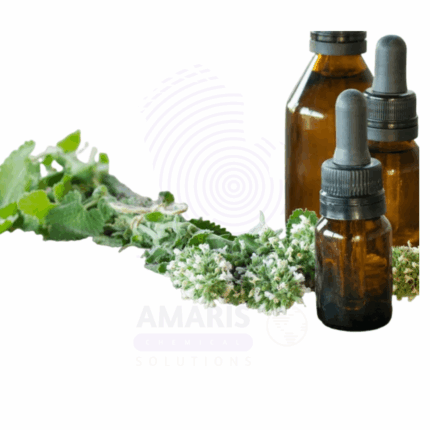
Lemongrass Oil
$ 34.15 Original price was: $ 34.15.$ 34.06Current price is: $ 34.06.

Olive Oil Pomace
$ 16.35 Original price was: $ 16.35.$ 16.25Current price is: $ 16.25.
Mint Oil
$ 41.15
Whatsapp Order
Mint Oil, primarily derived from Mentha piperita (peppermint) or Mentha arvensis (cornmint), is a clear to pale yellow essential oil known for its sharp, fresh, and cooling aroma. Rich in menthol and menthone, this oil exhibits potent antiseptic, analgesic, and digestive properties. Mint Oil is widely used across aromatherapy, pharmaceuticals, personal care products, food flavoring, and natural cleaning agents. Its invigorating scent stimulates the senses, promotes mental clarity, and provides soothing relief in topical applications. Additionally, mint oil is valued for its cooling effect on the skin and its natural ability to deter insects.
Description
Table of Contents
Toggle
Mint Oil
Primary Uses
- Cosmetic and Personal Care Chemicals
- Used in toothpastes, mouthwashes, and oral hygiene products for its refreshing flavor and antiseptic properties.
- Incorporated into shampoos, conditioners, and skin care formulations for its cooling and soothing effects.
- Added to muscle rubs and massage oils to relieve aches, pains, and inflammation.
- Pharmaceutical Chemicals
- Utilized in cough syrups, inhalants, and topical analgesics for respiratory relief and pain reduction.
- Included in digestive aids and antispasmodic formulations to soothe gastrointestinal discomfort.
- Cleaning and Detergent Chemicals
- Used in natural disinfectants, air fresheners, and floor cleaners for its antimicrobial activity and fresh fragrance.
- Added to hand sanitizers and liquid soaps to enhance cleansing and aroma.
- Food and Beverage Chemicals
- Employed as a natural flavoring agent in chewing gums, candies, beverages, and confectionery products (food-grade only).
Secondary Uses
- Aromatherapy & Wellness
- Diffused or inhaled to reduce stress, improve focus, and alleviate headaches.
- Used in insect repellent formulations to deter mosquitoes and other pests.
- Industrial Applications
- Incorporated in perfumery and fragrance blends for its clean, fresh aroma.
Additional information
| PACK SIZE |
5kg |
|---|
KEY PRODUCT FEATURES
1. Basic Identification Attributes
- Botanical Name: Mentha piperita / Mentha arvensis
- Common/Trade Name: Mint Oil, Peppermint Oil, Cornmint Oil
- INCI Name: Mentha Piperita Oil / Mentha Arvensis Herb Oil
- CAS Number: 8006-90-4 (Peppermint), 8008-79-5 (Cornmint)
- HS Code: 3301.29
- Synonyms: Menthol Oil, Mint Essential Oil
2. Physical & Chemical Properties
- Physical State: Mobile liquid essential oil
- Color & Odor: Colorless to pale yellow; sharp, fresh, minty aroma
- Solubility: Insoluble in water; soluble in alcohol and oils
- Specific Gravity: 0.900 – 0.920
- Main Components: Menthol (30-55%), Menthone, Menthyl Acetate, 1,8-Cineole
3. Safety & Hazard Attributes
- GHS Classification: Irritant; may cause skin and eye irritation in concentrated form
- Toxicity: Requires dilution before topical use; avoid internal consumption without medical supervision
- Exposure Limits: Use in compliance with IFRA guidelines
- Allergen Information: Contains menthol, a potential sensitizer in some individuals
4. Storage & Handling Attributes
- Storage Conditions: Store in cool, dark, and dry environment away from heat and light
- Container Type: Amber glass bottles or HDPE containers
- Shelf Life: Up to 24 months when stored properly
- Handling Precautions: Avoid direct skin contact with undiluted oil; use personal protective equipment during handling
5. Regulatory & Compliance Attributes
- IFRA-compliant for fragrance applications (subject to concentration limits)
- Food-grade certification available for select batches
- Manufactured under GMP conditions
6. Environmental & Health Impact
- Biodegradability: Biodegradable
- Ecotoxicity: Low to moderate; avoid large discharges into water systems
- Bioaccumulation: Not expected under normal usage
SAFETY HANDLING PRECAUTIONS
Safety Handling Precautions
- PPE Required: Gloves and eye protection recommended for bulk handling
- Handling Guidelines: Use in well-ventilated areas; avoid inhalation of concentrated vapors
First Aid Measures
- Inhalation: Move to fresh air; seek medical attention if symptoms persist
- Skin Contact: Wash with soap and water; discontinue use if irritation occurs
- Eye Contact: Rinse eyes thoroughly with water; consult a physician if irritation continues
- Ingestion: Do not induce vomiting; seek immediate medical assistance
Firefighting Measures
- Fire Hazards: Flammable liquid; keep away from ignition sources
- Extinguishing Media: Use foam, CO₂, dry chemical extinguishers
- Special Precautions: Avoid inhaling smoke or fumes during fire
- Hazardous Combustion Products: Carbon oxides and organic compounds
Related products
Agarwood oil
Agarwood oil, also known as Oudh Oil, is a rare and luxurious essential oil derived from the heartwood of the Aquilaria tree, primarily found in Southeast Asia. This dark, viscous oil is extracted through steam distillation of infected wood—formed when the tree produces a dark, aromatic resin in response to fungal attack. The resulting oil is one of the most precious and complex natural fragrances in the world, known for its deep, woody, smoky, and slightly sweet aroma.
Agarwood Oil is widely revered in perfumery, spiritual rituals, and traditional medicine. Its rich olfactory profile and fixative qualities make it an indispensable ingredient in high-end perfumes and incense. Additionally, it is used in skin care, wellness therapies, and emotional balancing practices due to its grounding, calming, and meditative effects. Agarwood Oil is produced in extremely limited quantities, which adds to its exclusivity and value.
Almond Bitter Oil
Almond Bitter Oil, derived from the kernels of bitter almonds (Prunus amygdalus var. amara), is an essential oil known for its sharp, nutty, and marzipan-like aroma. This oil is produced through steam distillation of crushed bitter almond kernels and contains a naturally occurring compound called benzaldehyde, which gives it its characteristic scent. In purified form (free of hydrogen cyanide), bitter almond oil is used in fragrance, flavoring, and pharmaceutical applications.
Due to its potent aroma and biochemical properties, it is widely used in perfumery, baked goods flavoring (in controlled quantities), aromatherapy, and traditional topical remedies. It is important to distinguish between natural bitter almond oil, which must be detoxified, and synthetic benzaldehyde, which is commonly used as a substitute in commercial formulations.
Almond Wax
Almond Wax is a natural, plant-based wax derived from the hydrogenation of almond oil (Prunus amygdalus dulcis). It is a creamy to white, semi-solid wax with a mild, nutty scent and excellent emollient properties. Almond Wax is rich in fatty acids and has a smooth, soft texture, making it ideal for use in cosmetic, personal care, and candle formulations.
Due to its gentle consistency, skin-friendly profile, and moisturizing capabilities, Almond Wax is widely used in body butters, balms, lip care products, massage bars, and artisan soaps. It functions as a natural alternative to petroleum-based waxes and provides structure, viscosity, and glide to formulations. It also finds application in soft wax blends for natural candle products.
Calamus Oil
Calamus Oil is a warm, spicy-aromatic essential oil obtained through steam distillation of the dried roots (rhizomes) of Acorus calamus, commonly known as sweet flag. This highly fragrant oil carries an earthy, woody, and slightly peppery scent with a leathery undertone. Traditionally valued in Ayurvedic and Unani medicine systems, Calamus Oil has found applications in perfumery, hair care, aromatherapy, and natural health preparations due to its stimulating, antimicrobial, and anti-inflammatory properties.
While effective in small external doses, Calamus Oil must be used with caution as it contains β-asarone, a compound restricted in internal use due to potential toxicity. It remains widely used in external formulations like massage oils, hair tonics, and perfumes.
Calmintha Oil
Calmintha Oil is an aromatic essential oil derived through steam distillation of the aerial parts of Calamintha nepeta or closely related species within the Calamintha genus. Also known as lesser calamint, Calmintha is a herbaceous plant known for its minty, slightly camphoraceous fragrance with subtle floral undertones. The oil is rich in compounds such as pulegone, menthone, and isomenthone, which contribute to its invigorating, clarifying, and antimicrobial properties.
Used in traditional herbal medicine, perfumery, and aromatherapy, Calmintha Oil offers refreshing aromatic effects and is frequently utilized in respiratory blends, skin formulations, and natural cleaning products. Due to its high pulegone content, topical use should be limited and well-diluted.
Camphor White Oil
Camphor White Oil is a steam-distilled essential oil obtained from the wood of the Camphor tree (Cinnamomum camphora), primarily from the white fraction, which is rich in 1,8-cineole, camphor, and linalool. This fraction is the most commonly used in aromatherapy and topical preparations due to its potent but relatively balanced composition compared to brown or yellow fractions. The oil has a sharp, penetrating aroma with a cooling, medicinal character.
Traditionally used in topical pain relief, respiratory care, and soothing balms, Camphor White Oil is known for its anti-inflammatory, decongestant, antiseptic, and stimulating effects. It is widely used in cosmetics, personal care, pharmaceuticals, and aromatherapy formulations.
Catnip Oil
Catnip Oil is a highly aromatic essential oil steam-distilled from the leaves and flowering tops of Nepeta cataria, a herbaceous plant from the mint family. Known for its characteristic minty, herbaceous, and slightly sweet scent, Catnip Oil contains nepetalactone, a compound recognized for its insect-repellent and calming properties. Though commonly associated with its euphoric effects on cats, Catnip Oil is widely used in aromatherapy, natural insect repellents, and personal care products for humans. It also finds niche applications in pet care formulations and herbal preparations.
Michelia Flower Oil
Michelia Flower Oil is an essential oil extracted through steam distillation or solvent extraction from the flowers of Michelia species (e.g., Michelia champaca, Michelia alba). Known for its rich, floral, and slightly fruity aroma, it is widely used in perfumery, aromatherapy, and traditional medicine. The oil is prized for its therapeutic properties and as a natural fragrance ingredient.


 Preservatives(food)
Preservatives(food) Flavor Enhancers
Flavor Enhancers Acidulants
Acidulants Sweeteners
Sweeteners Antioxidants
Antioxidants Colorants(food)
Colorants(food) Nutraceutical Ingredients (food)
Nutraceutical Ingredients (food) Nutrient Supplements
Nutrient Supplements Emulsifiers
Emulsifiers
 Collectors
Collectors Dust Suppressants
Dust Suppressants Explosives and Blasting Agents
Explosives and Blasting Agents Flocculants and Coagulants
Flocculants and Coagulants Frothers
Frothers Leaching Agents
Leaching Agents pH Modifiers
pH Modifiers Precious Metal Extraction Agents
Precious Metal Extraction Agents
 Antioxidants(plastic)
Antioxidants(plastic) Colorants (Pigments, Dyes)
Colorants (Pigments, Dyes) Fillers and Reinforcements
Fillers and Reinforcements Flame Retardants
Flame Retardants Monomers
Monomers Plasticizers
Plasticizers Polymerization Initiators
Polymerization Initiators Stabilizers (UV, Heat)
Stabilizers (UV, Heat)
 Antifoaming Agents
Antifoaming Agents Chelating Agents
Chelating Agents Coagulants and Flocculants
Coagulants and Flocculants Corrosion Inhibitors
Corrosion Inhibitors Disinfectants and Biocides
Disinfectants and Biocides Oxidizing Agents
Oxidizing Agents pH Adjusters
pH Adjusters Scale Inhibitors( water)
Scale Inhibitors( water)
 Antioxidants(cosmetic)
Antioxidants(cosmetic) Emollients
Emollients Fragrances and Essential Oils
Fragrances and Essential Oils Humectants
Humectants Preservatives
Preservatives Surfactants(cosmetic)
Surfactants(cosmetic) Thickeners
Thickeners UV Filters
UV Filters
 Fertilizers
Fertilizers Soil Conditioners
Soil Conditioners Plant Growth Regulators
Plant Growth Regulators Animal Feed Additives
Animal Feed Additives Biostimulants
Biostimulants Pesticides (Herbicides, Insecticides, Fungicides)
Pesticides (Herbicides, Insecticides, Fungicides)
 Active Pharmaceutical Ingredients (APIs)
Active Pharmaceutical Ingredients (APIs) Excipients
Excipients Solvents(pharmaceutical)
Solvents(pharmaceutical) Antibiotics
Antibiotics Antiseptics and Disinfectants
Antiseptics and Disinfectants Vaccine Adjuvants
Vaccine Adjuvants Nutraceutical Ingredients (pharmaceutical)
Nutraceutical Ingredients (pharmaceutical) Analgesics & Antipyretics
Analgesics & Antipyretics
 Analytical Reagents
Analytical Reagents Solvents(lab)
Solvents(lab) Chromatography Chemicals
Chromatography Chemicals Spectroscopy Reagents
Spectroscopy Reagents microbiology-and-cell-culture-reagents
microbiology-and-cell-culture-reagents Molecular Biology Reagents
Molecular Biology Reagents Biochemical Reagents
Biochemical Reagents Inorganic and Organic Standards
Inorganic and Organic Standards Laboratory Safety Chemicals
Laboratory Safety Chemicals Specialty Laboratory Chemicals(Special Laboratory Equipment)
Specialty Laboratory Chemicals(Special Laboratory Equipment)
 Demulsifiers
Demulsifiers Hydraulic Fracturing Fluids
Hydraulic Fracturing Fluids Scale Inhibitors(oil)
Scale Inhibitors(oil) Surfactants(oil)
Surfactants(oil) Drilling Fluids
Drilling Fluids
 Dyes and Pigments
Dyes and Pigments Bleaching Agents
Bleaching Agents Softening Agents
Softening Agents Finishing Agents
Finishing Agents Antistatic Agents
Antistatic Agents
 Admixtures
Admixtures Waterproofing Agents
Waterproofing Agents Sealants and Adhesives
Sealants and Adhesives Curing Compounds
Curing Compounds Concrete Repair Chemicals
Concrete Repair Chemicals Anti-Corrosion Coatings
Anti-Corrosion Coatings
 Surfactants(cleaning)
Surfactants(cleaning) Builders
Builders Enzymes
Enzymes Solvents (Cleaning)
Solvents (Cleaning) Fragrances
Fragrances
 Electronic Chemicals
Electronic Chemicals Catalysts
Catalysts Lubricants
Lubricants Photographic Chemicals
Photographic Chemicals Refrigerants
Refrigerants Automotive chemicals
Automotive chemicals Pyrotechnic Chemicals
Pyrotechnic Chemicals
 Biodegradable Surfactants
Biodegradable Surfactants Bio-based Solvents
Bio-based Solvents Renewable Polymers
Renewable Polymers Carbon Capture Chemicals
Carbon Capture Chemicals Wastewater Treatment Chemicals
Wastewater Treatment Chemicals
 Pigments
Pigments Solvents(paint)
Solvents(paint) Specialty Coatings
Specialty Coatings Binders/Resins
Binders/Resins Additives
Additives Driers
Driers Anti-Corrosion Agents
Anti-Corrosion Agents Functional Coatings
Functional Coatings Application-Specific Coatings
Application-Specific Coatings
 Fresh Herbs
Fresh Herbs Ground Spices
Ground Spices Whole Spices
Whole Spices Spice Blends
Spice Blends Dried Herbs
Dried Herbs
 Leavening Agents
Leavening Agents Dough Conditioners
Dough Conditioners Flour Treatments
Flour Treatments Fat Replacers
Fat Replacers Decoratives
Decoratives Preservatives(baking)
Preservatives(baking)
 Plasticizers & Softeners
Plasticizers & Softeners Reinforcing Agents
Reinforcing Agents Adhesion Promoters
Adhesion Promoters Vulcanizing Agents
Vulcanizing Agents Antidegradants
Antidegradants Blowing Agents
Blowing Agents Fillers & Extenders
Fillers & Extenders Accelerators & Retarders
Accelerators & Retarders
























